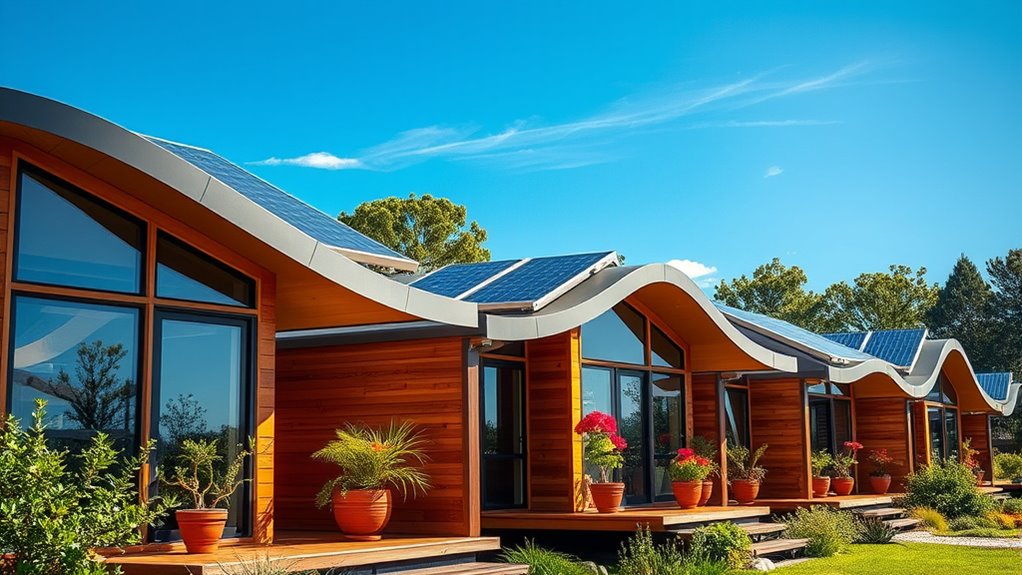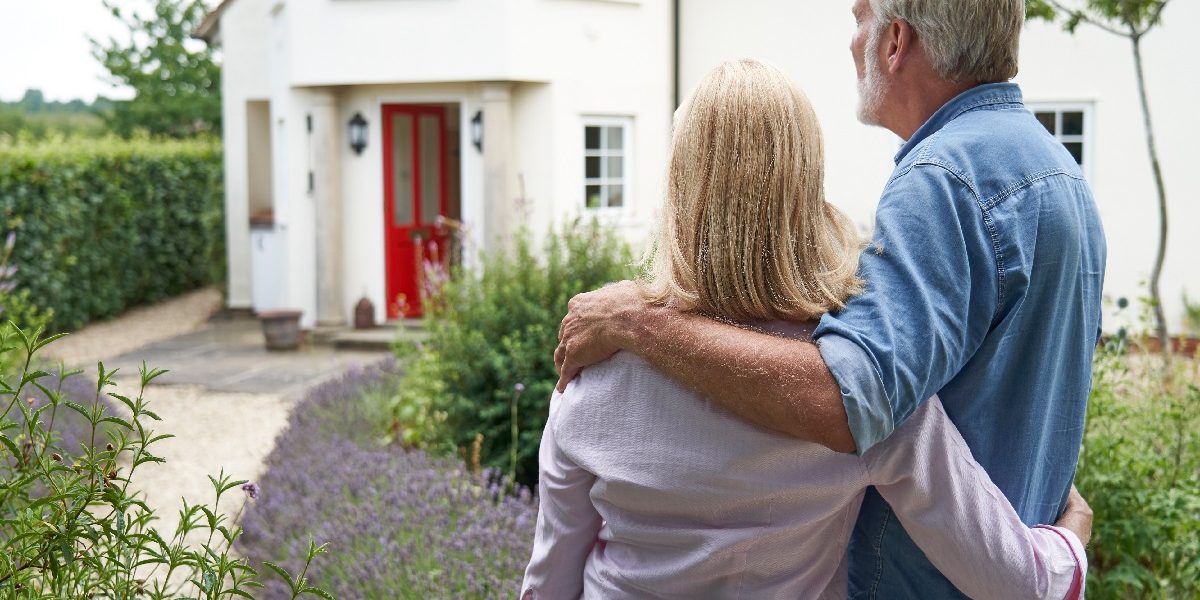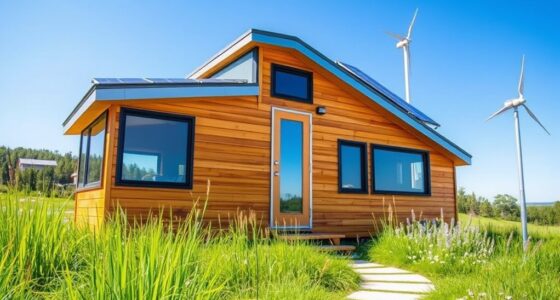When designing a solar-powered tiny house, focus on placing panels on south-facing roofs in the northern hemisphere, avoiding shading from trees or structures. Tilt the panels based on your latitude for maximum sunlight absorption. Choose lightweight lithium-ion batteries to store excess energy and size your battery bank according to your daily needs. Use a quality inverter and charge controller to guarantee system efficiency and longevity. If you keep exploring, you’ll discover how to seamlessly integrate these elements for a sustainable, efficient tiny home.
Key Takeaways
- Position solar panels south-facing with optimal tilt based on latitude, avoiding shading for maximum energy absorption.
- Size battery storage to match daily energy consumption, ensuring reliable power for all household activities.
- Integrate high-quality inverters and charge controllers to optimize system efficiency and prolong equipment lifespan.
- Prioritize durable, lightweight batteries to support mobility and space constraints of tiny houses.
- Combine strategic panel placement, proper storage, and component quality for a sustainable, efficient solar power system.

Have you ever wondered how tiny houses can become fully sustainable with solar power? It all starts with smart planning around solar panel placement. You want to guarantee your panels catch the most sunlight possible throughout the day, so positioning them on a roof that faces south (in the northern hemisphere) is ideal. Avoid shading from trees, chimneys, or neighboring structures, as these can considerably reduce your solar system’s efficiency. The angle of your panels matters too; tilt them at an ideal angle based on your latitude to maximize energy absorption. Proper placement isn’t just about efficiency—it also assures your tiny house maintains its aesthetic appeal and structural integrity.
Once your panels are in place, you need reliable energy storage solutions to keep your tiny house powered when the sun isn’t shining. Think of batteries as your energy backup system; they store excess power generated during sunny days so you can use it during cloudy days or at night. Lithium-ion batteries are popular because they’re lightweight, durable, and have high energy density, making them perfect for small spaces. When designing your system, consider the capacity you need—calculate your daily energy consumption to determine the size of your battery bank. This way, you won’t run out of power when you need it most, whether you’re cooking, working, or relaxing inside your tiny home.
Integrating energy storage solutions with your solar panel setup requires careful planning. You’ll need an inverter to convert the direct current (DC) produced by your panels into alternating current (AC) usable in your home. A quality inverter ensures your appliances run smoothly and efficiently. Additionally, a charge controller is essential to prevent batteries from overcharging, which could damage them and reduce their lifespan. The right combination of solar panel placement and energy storage solutions doesn’t just make your tiny house sustainable; it also involves understanding the role of contrast ratio in your system’s performance, ensuring your energy setup delivers optimal visual and functional quality.
Frequently Asked Questions
Can Tiny Houses Be Connected to the Grid if Needed?
Yes, you can connect your tiny house to the grid if needed. Your grid connection options include hooking up through local utilities or installing an external inverter system. This setup allows you to draw power when solar isn’t enough. Additionally, you should consider backup power systems, like batteries, to guarantee continuous electricity during outages. Proper planning ensures your tiny house remains functional, sustainable, and adaptable to your energy needs.
What Are the Costs of Installing Solar Panels on Tiny Homes?
Think of solar panel installation as planting seeds for energy independence. The tiny house cost for installing solar panels varies, typically ranging from $5,000 to $15,000, depending on system size and quality. This investment pays off over time with reduced utility bills and eco-friendliness. While initial costs might seem steep, the long-term savings and sustainability benefits make it a wise choice for powering your tiny home.
How Do Solar Panels Perform in Areas With Limited Sunlight?
In areas with limited sunlight, solar panels still work, but their efficiency drops due to lower solar irradiance, meaning they generate less power. Shading impact from trees or structures further reduces output, so you might need more panels or higher-efficiency ones. To optimize performance, consider positioning panels where they get the most direct sunlight and minimize shading, ensuring your tiny house remains energy-efficient even in less sunny conditions.
Are There Any Zoning Restrictions for Solar-Powered Tiny Houses?
Imagine you’re in a space race with zoning regulations and building codes. Yes, there are restrictions for solar-powered tiny houses. Local zoning laws may limit size, placement, or even require setbacks, while building codes guarantee safety and sustainability standards are met. Before building, check with your city or county planning office to understand specific rules, permits, and possible restrictions to avoid surprises and make your tiny house dream a reality.
What Maintenance Is Required for Tiny House Solar Systems?
You need to regularly check your tiny house solar system’s battery maintenance to guarantee it stays in good condition. Keep an eye on water levels if you have flooded batteries, and clean your panels with a soft brush or cloth to maximize efficiency. Additionally, inspect wiring and connections for corrosion or damage. Proper maintenance helps your solar system run smoothly, providing reliable energy for your tiny home.
Conclusion
So, after all this talk about tiny houses and solar power, you might think you’re doing your part for the planet. But remember, designing a solar-powered tiny house isn’t just about saving energy — it’s about proving that even the smallest homes can have the biggest impact. Ironically, in trying to simplify life, you might end up complicating it with all these eco-innovations, just to showcase how little space and resources you really need.









